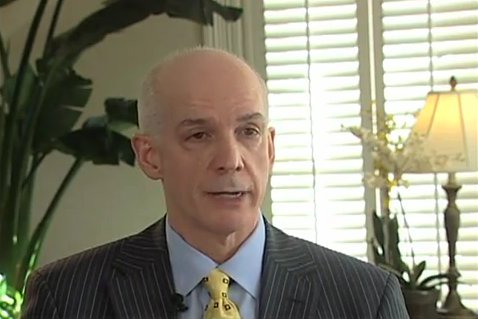- HAIR TRANSPLANT Q&A
- Video Q&A with Dr. Bernstein
Hair transplantation was introduced in the United States by Dr. Norman Orentreich in 1959. He demonstrated that hair taken from one area of the scalp would continue to grow even if it were transplanted to a balding area of the head.
The problem with this scientific breakthrough was that hair was being transplanted in clumps or “plugs” that did not appear natural. And although patients who had hair transplants were indeed growing hair on what was once a balding pate, the appearance was akin to that of a doll’s head and hardly much of a cosmetic improvement for their baldness.
In 1995, Drs. Bernstein and Rassman presented a paper describing a new procedure surgical hair restoration called Follicular Unit Transplantation or FUT. In this new technique, hair would be transplanted using only naturally occurring, individual units of 1, 2, 3 or 4 follicles. These perfectly intact “follicular units” would be obtained by removing a single, thin strip of skin from the back of the scalp and then using a dissecting stereomicroscope to isolate the tiny naturally occurring groups of hair.
Since the publication of “Follicular Transplantation” hair transplantation has undergone an “extreme makeover” itself, in part due to the incredibly natural results that this powerful procedure can produce. FUT is now considered to be the state-of-the-art in hair transplant surgery and is currently the most widely used surgical hair restoration technique.
Robert M. Bernstein M.D., Clinical Professor of Dermatology at Columbia University in New York City, sat with us for a Q&A on hair transplant surgery and its future.
How are Hair Follicles Removed in Follicular Unit Transplantation?
In order to safely remove and preserve the follicular units without causing any damage to them, the donor tissue is removed in one thin piece. This technique is called Single Strip Harvesting and it is an essential component of follicular unit hair transplants.
How Many Grafts Should be Transplanted at Once?
The average session for a moderately bald person, who has lost most of the hair on the top of his scalp is around 2,500 grafts. Although it is best to complete the hair restoration in as few large sessions as possible, there are limits. When too large a strip is removed, it can cause undue tension in the donor area and cause a stretched scar or loss of hair. Excessively long hair transplants, where the grafts are kept outside the body for an extended period of time, may compromise graft survival.
Another issue with very large sessions is that a hair transplant doctor has less flexibility if problems arise during the surgery. Patient variability is an intrinsic part of hair transplants. In some patients, the grafts tend to pop up above the skin surface as they are inserted into the scalp. Popping also occurs when a graft placed in the skin causes an adjacent one to lift. The closer you put the grafts and the more grafts you transplant at one time, the greater the chance that these problems will occur and the more difficult they will be to manage. The goal is to always maximize what you get from the back and what grows in the front and top. It’s not a race where we have to do 3,000 or 4,000 grafts in every patient. When I hear people say, “Oh, I had 5,000 grafts.” I think “How many of those actually grew?”
Is Hair Transplant Surgery Permanent?
Yes, the hair on the back and sides of the scalp is permanent and it retains this characteristic even when moved to the front and top of the scalp.
Will Transplanted Hair Change Over Time?
The genetic tendency of hair to grow is dependent upon the donor area where the hair comes from. We call this “donor dominance.” However, the character of the hair, the wave, the rate of growth, is affected by the area where it is transplanted into. For example, we discovered that when we take scalp hair and transplant it to the eyebrows, over time, the growth rate actually slows down to match the growth of eyebrows. In this case, the recipient area has an influence on the growth of the eyebrow hair.
Can You Take Hair from Someone Else and Transplant it on Your Own Head?
You cannot perform hair transplants with hair taken from someone else. It has to be your own hair or it will be rejected by the body.
What is the Future of Hair Transplantation?
The next big improvement to the field of surgical hair restoration will be hair multiplication – commonly but erroneously referred to as hair cloning. This technique will dramatically increase a person’s limited donor supply, an issue that frustrates many patients wanting hair restoration.
The mechanism for cloning is based on the multiplication of the cells that surround a hair follicle. These cells, called fibroblasts are readily multiplied outside the body. Once multiplied, the “fibroblasts” could be injected into the skin to induce hairs to form. The problem is that when you multiply these fibroblasts, they lose their ability to stimulate hair to grow – a major roadblock that still needs to be overcome.
Another concern with hair cloning is that if you’re inducing hair to grow, what will it look like? Is it going to be wild and uncontrollably wiry? Will it look like the person’s normal hair? Because the recipient area plays a factor in the way a follicle grows, it’s reasonable to assume that even if you inject these fibroblasts to induce a hair to form, that hair will start to take on the characteristics of a person’s original hair.
It is exciting to think of the possibilities that improvements in the science of hair transplants will afford to those suffering from the effects of hair loss. Perhaps someday any baldness in men and women will be a result of choice and not a genetic constraint, but will unlikely be available for at least 5-10 years.






